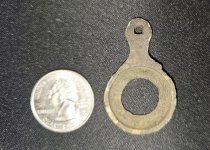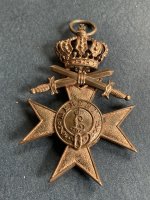De Beers Finds Shipwreck, Treasure From Columbus Era
By Chamwe Kaira
April 30 (Bloomberg) -- De Beers, the world's biggest undersea diamond miner, said its geologists in Namibia found the wreckage of an ancient sailing ship still laden with treasure, including six bronze cannons, thousands of Spanish and Portuguese gold coins and more than 50 elephant tusks.
The wreckage was discovered in the area behind a sea wall used to push back the Atlantic Ocean in order to search for diamonds in Namibia's Sperrgebiet or ``Forbidden Zone.''
``If the experts' assessments are correct, the shipwreck could date back to the late 1400s or early 1500s, making it a discovery of global significance,'' Namdeb Diamond Corp., a joint venture between De Beers and the Namibian government, said in an e-mailed statement from the capital, Windhoek, today.
The site yielded a wealth of objects, including several tons of copper, more than 50 elephant tusks, pewter tableware, navigational instruments, weapons and the gold coins, which were minted in the late 1400s and early 1500s, according to the statement.
The Namibian government will claim ownership of the treasure found, Halifa Mbako, group corporate affairs manager at Namdeb, said in a telephone interview from Windhoek today.
Namibian Law
``By Namibian law, discoveries of this nature belong to the state,'' he said. ``The discovery was found in our mining area, but the treasure belongs to the state.'' The Namibian government is in consultations with the governments of Spain and Portugal to try and identify the ship, which was most likely a trading vessel, given the goods on board, said.
On April 1, Bob Burrell, the head of Namdeb's Mineral Resource Department, found some rounded copper ingots and the remains of three bronze cannons in the sand.
``All mining operations were halted, the site secured and Dr. Dieter Noli, an archaeologist and expert in the Sperrgebiet, was brought into the project and identified the cannons as Spanish breach-loaders of a type popular in the early 1500s,'' Namdeb said.
The find may be the oldest sub-Saharan shipwreck ever discovered, Namdeb said.
``If this proves to be a contemporary of the ships sailed by the likes of Diaz, Da Gama and Columbus, it would be of immense national and international interest and Namibia's most important archaeological find of the century,'' according to the statement.
Diamonds have been mined along the south-western coast of Namibia and in its coastal waters for the last 100 years. De Beers, the world's largest diamond company, is 45 percent owned by Anglo American Plc, 40 percent held by the Oppenheimer family and 15 percent owned by the government of Botswana.
By Chamwe Kaira
April 30 (Bloomberg) -- De Beers, the world's biggest undersea diamond miner, said its geologists in Namibia found the wreckage of an ancient sailing ship still laden with treasure, including six bronze cannons, thousands of Spanish and Portuguese gold coins and more than 50 elephant tusks.
The wreckage was discovered in the area behind a sea wall used to push back the Atlantic Ocean in order to search for diamonds in Namibia's Sperrgebiet or ``Forbidden Zone.''
``If the experts' assessments are correct, the shipwreck could date back to the late 1400s or early 1500s, making it a discovery of global significance,'' Namdeb Diamond Corp., a joint venture between De Beers and the Namibian government, said in an e-mailed statement from the capital, Windhoek, today.
The site yielded a wealth of objects, including several tons of copper, more than 50 elephant tusks, pewter tableware, navigational instruments, weapons and the gold coins, which were minted in the late 1400s and early 1500s, according to the statement.
The Namibian government will claim ownership of the treasure found, Halifa Mbako, group corporate affairs manager at Namdeb, said in a telephone interview from Windhoek today.
Namibian Law
``By Namibian law, discoveries of this nature belong to the state,'' he said. ``The discovery was found in our mining area, but the treasure belongs to the state.'' The Namibian government is in consultations with the governments of Spain and Portugal to try and identify the ship, which was most likely a trading vessel, given the goods on board, said.
On April 1, Bob Burrell, the head of Namdeb's Mineral Resource Department, found some rounded copper ingots and the remains of three bronze cannons in the sand.
``All mining operations were halted, the site secured and Dr. Dieter Noli, an archaeologist and expert in the Sperrgebiet, was brought into the project and identified the cannons as Spanish breach-loaders of a type popular in the early 1500s,'' Namdeb said.
The find may be the oldest sub-Saharan shipwreck ever discovered, Namdeb said.
``If this proves to be a contemporary of the ships sailed by the likes of Diaz, Da Gama and Columbus, it would be of immense national and international interest and Namibia's most important archaeological find of the century,'' according to the statement.
Diamonds have been mined along the south-western coast of Namibia and in its coastal waters for the last 100 years. De Beers, the world's largest diamond company, is 45 percent owned by Anglo American Plc, 40 percent held by the Oppenheimer family and 15 percent owned by the government of Botswana.




